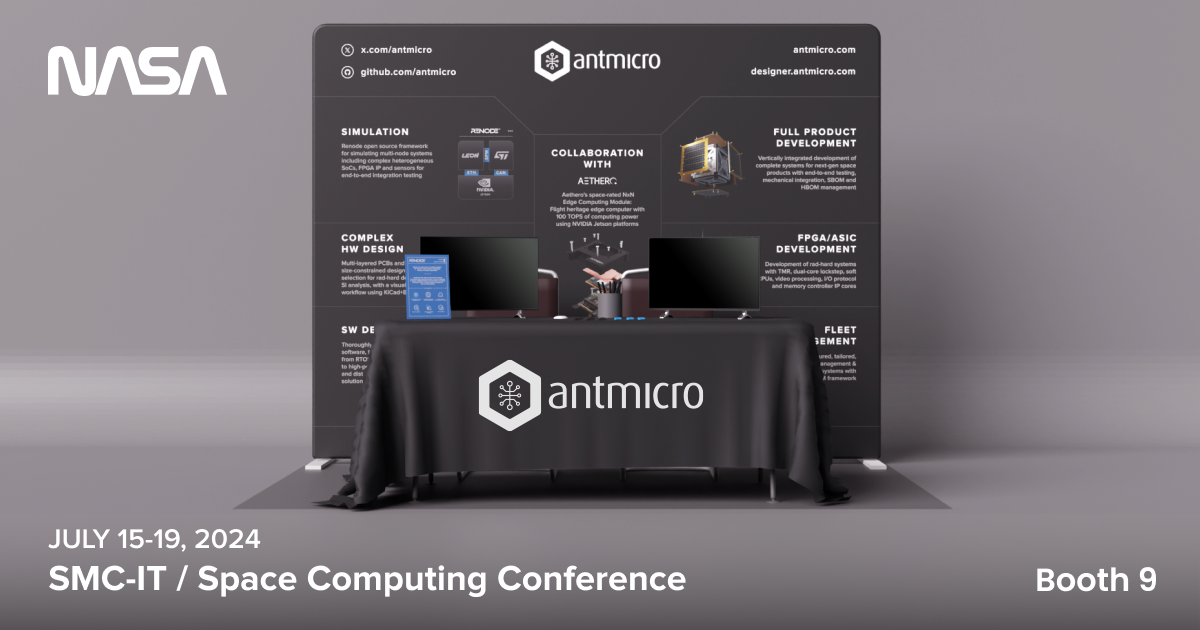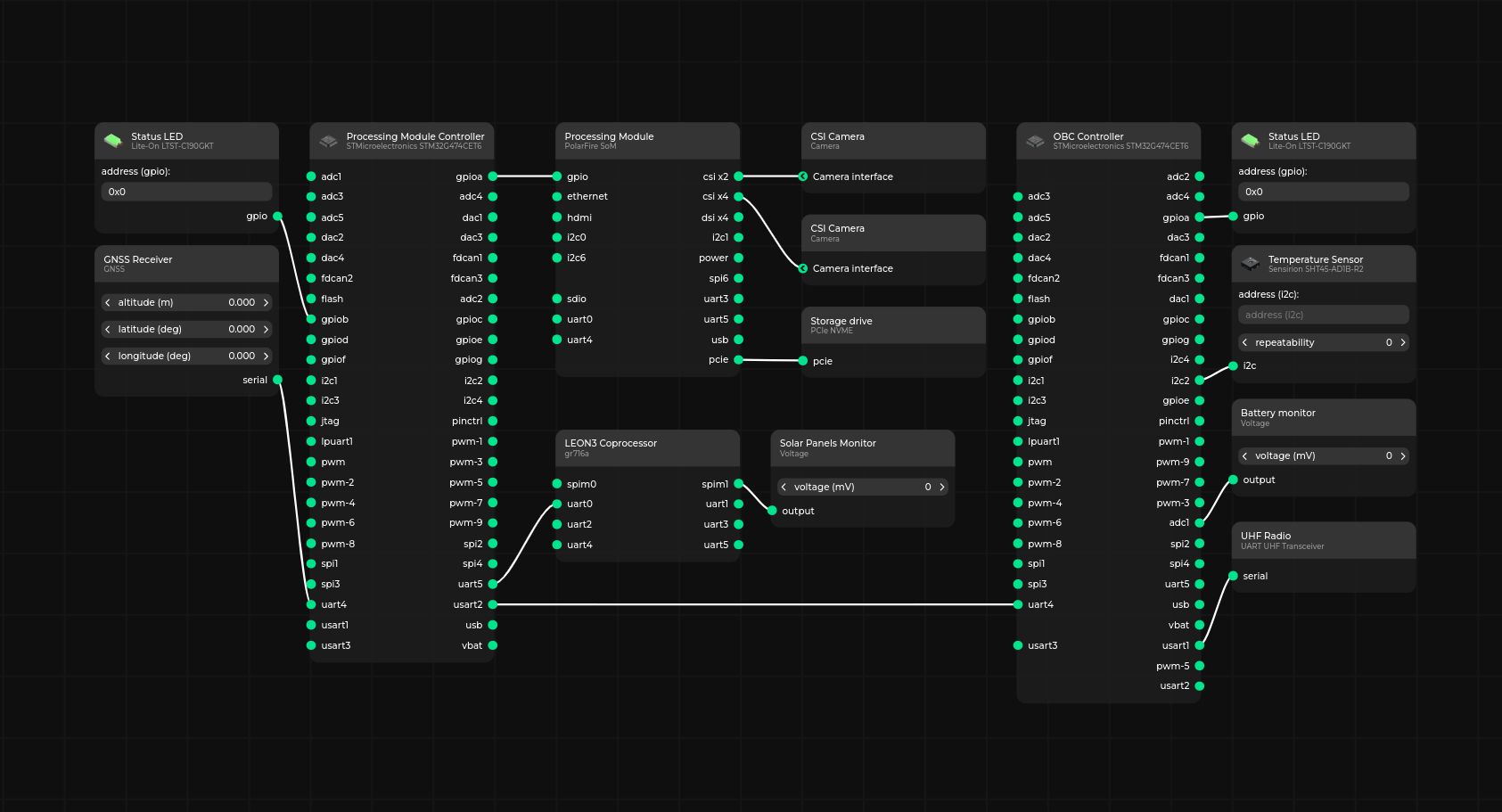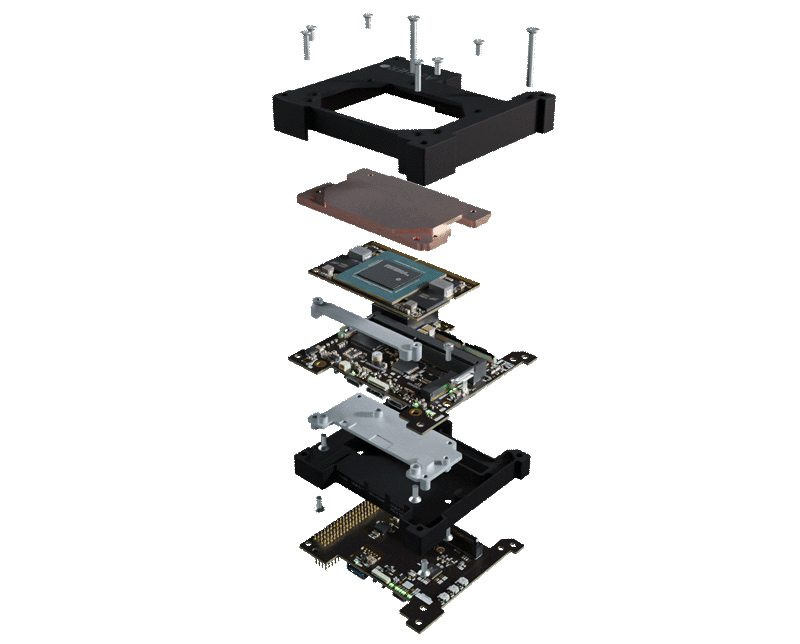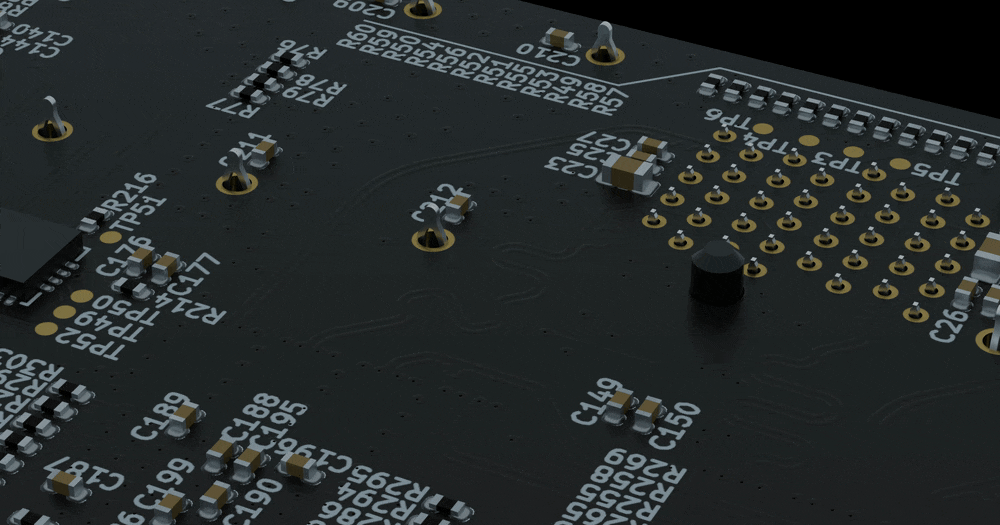As the complexity of space-faring hardware and software increases, so does the significance of extensive automated testing, traceability and a dependable, collaborative development environment. During the International Conference on Space Mission Challenges for Information Technology (SMC-IT) and the Space Computing Conference (SCC) this year, of which Antmicro is proud to be a Platinum sponsor, we will showcase how our open source, software-driven development approach leads to vertical integration and, ultimately, better, reliable devices for space industry customers, with faster turnaround.
The event, run by the NASA Jet Propulsion Laboratory, will be held in the Computer History Museum in Mountain View, CA on 15-19th July 2024. Visit Antmicro’s booth no. 9, where together with our partner Aethero, we will be presenting the space-ready NxN Embedded Compute Module, delivered from concept to launch within a year, powered by this methodology and our open source toolkit.
Antmicro will also be addressing the space technology community with a talk on Tuesday, 16th July, titled “Rapid development and automated testing of dependable heterogeneous multi-node space systems with open source tools”, discussing various aspects of the design and verification process of a modular, heterogeneous multi-node OBC system involving multiple architectures (such as ARM, RISC-V and LEON), Linux and RTOS nodes, and soft FPGA IP. The event will also be sponsored by Antmicro’s partners and customers likewise involved in developing RISC-V based systems for space, Microchip and SiFive, exhibiting right next to us.

Vertically integrated, software-driven complete system design
Antmicro brings a software-driven, open source methodology to complex hardware-software systems. Automated, CI-driven workflows for thorough testing even before hardware is available, fast turnaround, transparency and scalability at every stage of the design lifecycle are at the core of our work.
To achieve this, Antmicro is invested in building an open source ecosystem that embraces modularity and reuse between use cases and verticals across our services in software and hardware, on physical setups and simulation. We are bringing together workflows from all domains of Antmicro’s expertise into a tool called System Designer, whose capabilities we will present during the SCC event, using a space compute system representation based on Antmicro’s open source PolarFire SoM described in a recent article.
Space system development with Antmicro: a heterogeneous, multi-node space compute setup
To showcase the capabilities of our open source toolkit as well as the vertical integration philosophy present in our engineering, we have prepared a model of a space-oriented, heterogeneous multi-node system compatible with the CubeSat specification. The sample system consists of:
- an OBC based on an STM32G474CET6 MCU running Zephyr, equipped with an UHF radio and a battery voltage monitor
- a Processing Module Controller running Zephyr, communicating with the OBC via UART, connected to a GNSS receiver
- Antmicro’s open source PolarFire SoM running Linux for on-board processing, connected to the Processing Module Controller via GPIO, equipped with two CSI cameras via CSI x2 and x4 interfaces, as well as a PCIe NVME storage drive
- a LEON3 coprocessor connecting to the Processing Module Controller via UART, for solar panel monitoring.
Below, you can see an interactive block diagram representing the CubeSat Edge Computing System prepared in Antmicro’s System Designer:

(For an interactive version of the diagram, visit the desktop version of the website)
During the event, we will present this setup created in System Designer, walk the audience through the methodology and technologies used in the development of such real-life devices and their comprehensive testing with Renode, Antmicro’s flagship system simulation framework. We will use this as a starting point for discussing the ways in which various open source hardware and software technologies come together in practical product development scenarios.
Full flight-grade product development showcase: Aethero’s NxN Edge Computing Module
The NxN Edge Computing Module and processing system that we developed with our partner, Aethero can serve as a prime, real-life example of Antmicro’s end-to-end commercial engineering services in the space sector that benefited from numerous parts of our open source system design ecosystem.
The module, with its design rooted in Antmicro’s open source Jetson Orin Baseboard, is a radiation hardened and versatile compute platform, the first space edge computer to achieve 100 TOPS. The hardware side of the project also included enclosure design and integration using our rapid turnaround open hardware flow including KiCad and Blender to target the smallest space platform - the CubeSat form factor, which also allows it to be compatible across a range of larger space platforms. Below, you can see an animation of the board as it fits in its CubeSat enclosure, prepared with our open source rendering flow:

On the software side, we have been providing the basis of the Linux-based system for the main compute module and Zephyr RTOS-based firmware for the companion MCUs; the system is, as is obviously necessary for space-faring equipment, field-updatable with our open source RDFM framework allowing for delta updates (very important in such a constrained bandwidth scenario) through Aethero’s user portal.
With the project’s turnaround time spanning only a year, we are proud to consider this work a testament to the benefits of pursuing a vertically-integrated, modular approach to both software and hardware and the transparency, reproducibility and full ownership that comes with open source workflows. Developing this multi-node system with such a rapid turnaround wouldn’t be possible without simulation-based testing enabled by Renode.
Develop thoroughly tested multi-core, heterogeneous space systems with Antmicro’s end-to-end open source workflows
By bringing the software-driven, open source approach to all aspects of development of space-bound systems and by leveraging modularity at each step of the design and prototyping process, Antmicro’s workflows, toolkit and expertise offer full control and transparency, as well as enable rapid collaborative parallel development of software and hardware. As a result, Antmicro’s partners and customers are able to bring thoroughly-tested, complete and spaceworthy products to deployment fast and ensure their reliability and scalability.
Visit our booth during the SCC event to discuss Antmicro’s commercial offering of space-facing services, including developing and testing of heterogeneous multi-node systems in simulation with Renode and its numerous integrations, fast-turnaround development of space-bound, rad-hard FPGA and ASIC designs, custom hardware, comprehensive solutions including OBC software and OTA update systems, as well as development, optimization and deployment of ML-based solutions for in-orbit edge AI.
If you are interested in developing heterogeneous, multi-node devices intended for use in space while maintaining full ownership and avoiding vendor lock-in, feel free to reach out to us at contact@antmicro.com to discuss the benefits Antmicro’s offering can bring to your projects.


